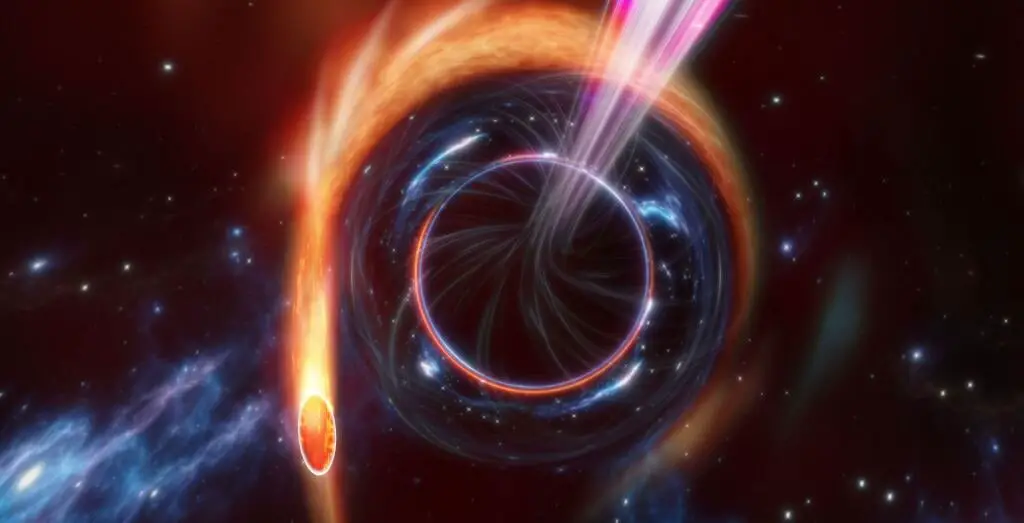In a groundbreaking discovery, physicists have found that gravity can create light under certain conditions, opening up new avenues of research in astrophysics and cosmology.

This revelation is based on a novel framework that combines Einstein’s General Theory of Relativity and Quantum Electrodynamics. The research paper “Graviton to photon conversion via parametric resonance” serves as the foundation for this breakthrough. This article delves into the implications of this discovery, the challenges it presents, and the future research directions in this field.
Table of Contents
The Discovery: Graviton to Photon Conversion
The research paper “Graviton to photon conversion via parametric resonance” outlines the discovery of a process through which gravity can create light. The physicists propose a new framework that merges gravitational and electromagnetic interactions, leading to the conversion of gravitons (quantum carriers of the gravitational force) into photons (quantum carriers of the electromagnetic force). This phenomenon occurs under specific conditions, such as the presence of intense gravitational fields near massive objects like black holes and neutron stars.
There are 6 Billion Earth-Like Planets in the Milky Way Galaxy Alone, Astronomers Find
Implications for Astrophysics and Cosmology
This groundbreaking discovery has significant implications for our understanding of the universe. Some of the potential insights include:
- Behavior of Charged Particles Near Massive Objects: The conversion of gravitons to photons can help us better comprehend the behavior of charged particles near black holes and neutron stars. This could lead to new discoveries about the dynamics of these celestial objects and their interactions with surrounding matter and energy.
- Primordial Universe: The newfound relationship that gravity can create light could also shed light on the behavior of charged particles in the early universe. This can help us further understand the formation and evolution of cosmic structures, such as galaxies, clusters, and superclusters.
- Dark Matter and Dark Energy: The discovery may also provide new clues about the mysterious dark matter and dark energy, which make up a significant portion of the universe’s mass-energy content. This could potentially lead to a deeper understanding of these enigmatic phenomena and their role in the cosmic evolution.
Challenges and Unresolved Questions
While this discovery has opened up new research avenues, it also presents several challenges and unanswered questions:
- Reconciliation with Quantum Mechanics and General Relativity: Physicists need to reconcile the results of this discovery with existing predictions of quantum mechanics and General Relativity. This will require a deeper understanding of the interplay between these two fundamental theories, leading to potential revisions or extensions of our current theoretical framework.
- Experimental Validation: The discovery currently relies on theoretical predictions. To solidify the findings, experimental evidence needs to be obtained, which could be challenging due to the extreme conditions required for graviton-photon conversion.
Future Research Directions
Given the potential impact of this discovery, it is crucial to pursue further research in the following areas:
- Refining the Theoretical Framework: Developing a more comprehensive understanding of the gravitational-electromagnetic interaction will be essential for addressing the challenges posed by this discovery. This may involve revising or extending our current theories to incorporate this newfound relationship between gravity and light.
- Experimental Probes: Designing experiments to directly or indirectly observe the graviton-photon conversion will be critical for validating the theoretical predictions. This may involve developing new experimental techniques or utilizing existing facilities, such as gravitational wave observatories.
- Exploration of Astrophysical and Cosmological Implications: Further research should be conducted to explore the consequences of graviton-photon conversion for astrophysics and cosmology. This may involve studying the behavior of charged particles near massive objects, as well as investigating the possible implications for dark matter, dark energy, and the early universe.
Conclusion
The discovery that gravity can create light under certain conditions represents a significant breakthrough in our understanding of the universe. With the potential to revolutionize astrophysics and cosmology, this finding paves the way for new insights into the enigmatic phenomena that govern our cosmos. While challenges remain, the future of research in this field is undoubtedly promising, with the potential to unlock new doors and unravel the mysteries of the universe.
Reference(s):
